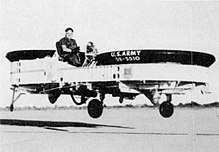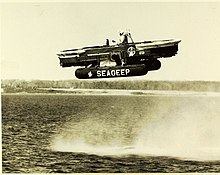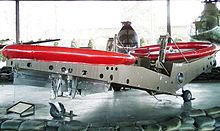
The Sikorsky CH-37 Mojave is an American large heavy-lift helicopter of the 1950s.
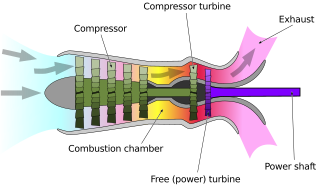
A turboshaft engine is a form of gas turbine that is optimized to produce shaft horsepower rather than jet thrust. In concept, turboshaft engines are very similar to turbojets, with additional turbine expansion to extract heat energy from the exhaust and convert it into output shaft power. They are even more similar to turboprops, with only minor differences, and a single engine is often sold in both forms.

The Aérospatiale Alouette II is a French light helicopter originally manufactured by Sud Aviation and later Aérospatiale. It was the first production helicopter powered by a gas turbine engine instead of the heavier conventional piston powerplant.

The Piasecki HUP Retriever/H-25 Army Mule is a compact single radial engine, twin overlapping tandem rotor utility helicopter developed by the Piasecki Helicopter Corporation of Morton, Pennsylvania. Designed to a United States Navy specification, the helicopter was produced from 1949 to 1954, and was also used by the United States Army and foreign navies. The HUP/H-25 was the first helicopter to be produced with an autopilot and also the first to perform a loop.

The Hiller VZ-1 Pawnee was a unique direct-lift rotor aircraft, using contra-rotating ducted fans for lift inside a platform upon which the single pilot shifted body weight for directional control. The platform was developed starting in 1953 under an Office of Naval Research (ONR) contract to Hiller Aircraft, and flew successfully beginning in 1955.
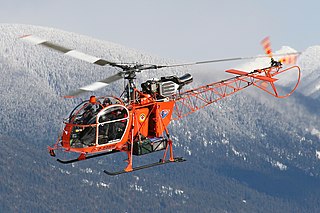
The Aérospatiale SA 315B Lama is a French single-engined helicopter. It combines the lighter Aérospatiale Alouette II airframe with Alouette III components and powerplant. The Lama possesses exceptional high altitude performance.

Frank Nicolas Piasecki was an American engineer and helicopter aviation pioneer. Piasecki pioneered tandem rotor helicopter designs and created the compound helicopter concept of vectored thrust using a ducted propeller.

The Kaman HH-43 Huskie is a helicopter developed and produced by the American rotorcraft manufacturer Kaman Aircraft. It is perhaps most distinctive for its use of twin intermeshing rotors, having been largely designed by the German aeronautical engineer Anton Flettner.
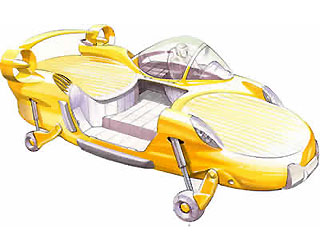
The Urban Aeronautics X-Hawk is a proposed flying car designed by Rafi Yoeli in Yavne, Israel, being built by Metro Skyways Ltd., a subsidiary of Yoeli's privately held company, Urban Aeronautics. The firm claims to have flown the car to a height of 90 cm (3 ft), and that greater heights are possible. The X-Hawk and its smaller unmanned version, the Tactical Robotics Cormorant, would be used in search and rescue operations where a helicopter would be useless, or at least very dangerous, such as evacuating people from the upper stories of burning buildings, or delivering and extracting police and soldiers while very close to structures, narrow streets, and confined spaces, with a projected size similar to that of a large van.

The Turbomeca Astazou is a highly successful series of turboprop and turboshaft engines, first run in 1957. The original version weighed 110 kg (243 lb) and developed 240 kW (320 shp) at 40,000 rpm. It was admitted for aviation service on May 29, 1961, after a 150-hour test run. The main developing engineer was G. Sporer. It was named after two summits of the Pyrenees.
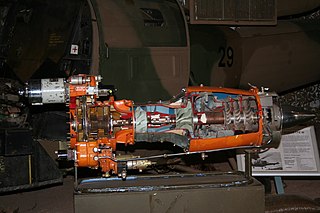
The Turbomeca Artouste is an early French turboshaft engine, first run in 1947. Originally conceived as an auxiliary power unit (APU), it was soon adapted to aircraft propulsion, and found a niche as a powerplant for turboshaft-driven helicopters in the 1950s. Artoustes were licence-built by Bristol Siddeley in the UK, Hindustan Aeronautics Limited in India, and developed by Continental CAE in the US as the Continental T51. Two major versions of the Artouste were produced. The Artouste II family, mainly used in the Aérospatiale Alouette II helicopter, had a one-stage centrifugal compressor and a two-stage turbine, with gearbox-limited power of 300 kW (400 hp). The Artouste III family, mainly used in Aérospatiale's Alouette III and Lama helicopters, had a two-stage axial-centrifugal compressor and a three-stage turbine, with gearbox-limited power of 420–440 kW (560–590 hp).

The Aerotécnica AC-14 was a Spanish five-seat light helicopter of the 1950s, designed by Jean Cantinieau, based on enlarging his Nord Norelfe design.

The Bell Model 201 was created using a modified Model 47G and was the first Bell helicopter to use a turbine engine.
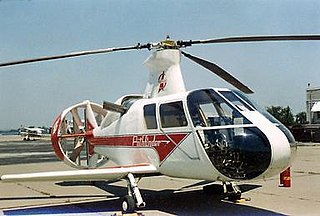
The Piasecki 16H was a series of compound helicopters produced in the 1960s. The first version of the Pathfinder, the -1 version, first flew in 1962. The similar but larger Pathfinder II, the 16H-1A, was completed in 1965.
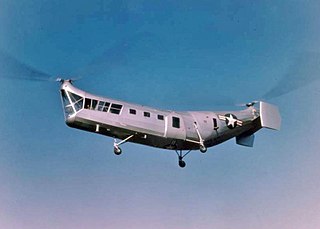
The Piasecki HRP Rescuer is a United States tandem-rotor transport or rescue helicopter designed by Frank Piasecki and built by Piasecki Helicopter. The Piasecki PV-3 was adopted as the HRP-1 Rescuer by the United States Navy, United States Marine Corps, and United States Coast Guard. An improved PV-17 variant was later produced as the HRP-2. As one of the first transport helicopters in military service, the HRP-1 was capable of carrying two crewmen and 8–10 passengers or 2,000 lb. (907 kg) of cargo.

The Sikorsky XH-39, developed by Sikorsky Aircraft in 1954, was the U.S. Army's first turbine-powered helicopter. It was fast and innovative, but ultimately rejected by the United States Army in favor of the Bell UH-1 Iroquois.
The Bensen B-10 Propcopter was an unconventional VTOL aircraft developed by Igor Bensen in the United States in the late 1950s. The pilot sat astride a beam that had an engine mounted at either end of it, each driving a rotor to provide lift. Each of these rotors was surrounded by a system of four pivotable vanes to direct its downwash, and linked to a control stick for the pilot, this provided control of the craft. Only a single prototype was built.

The Piasecki H-16 Transporter was a tandem-rotor transport or rescue helicopter designed by Frank Piasecki and built by Piasecki Helicopter. The prototypes were evaluated by the United States Air Force and Army, but the crash of the second test aircraft led to cancelling the project.

The Continental CAE T51 was a small turboshaft engine produced by Continental Aviation and Engineering (CAE) under license from Turbomeca. A development of the Artouste, it was followed by three additional turboshaft engines, the T72, the T65, and the T67. However, none of these engines, including the T51, entered full production. CAE abandoned turboshaft development in 1967 after the XT67 lost to the Pratt & Whitney Canada PT6T (T400) to power the Bell UH-1N Twin Huey.

The Curtiss-Wright VZ-7 was a VTOL quadrotor helicopter aircraft designed by the Curtiss-Wright company for the US Army. Like the Chrysler VZ-6 and the VZ-8 Airgeep it was to be a "flying jeep".

